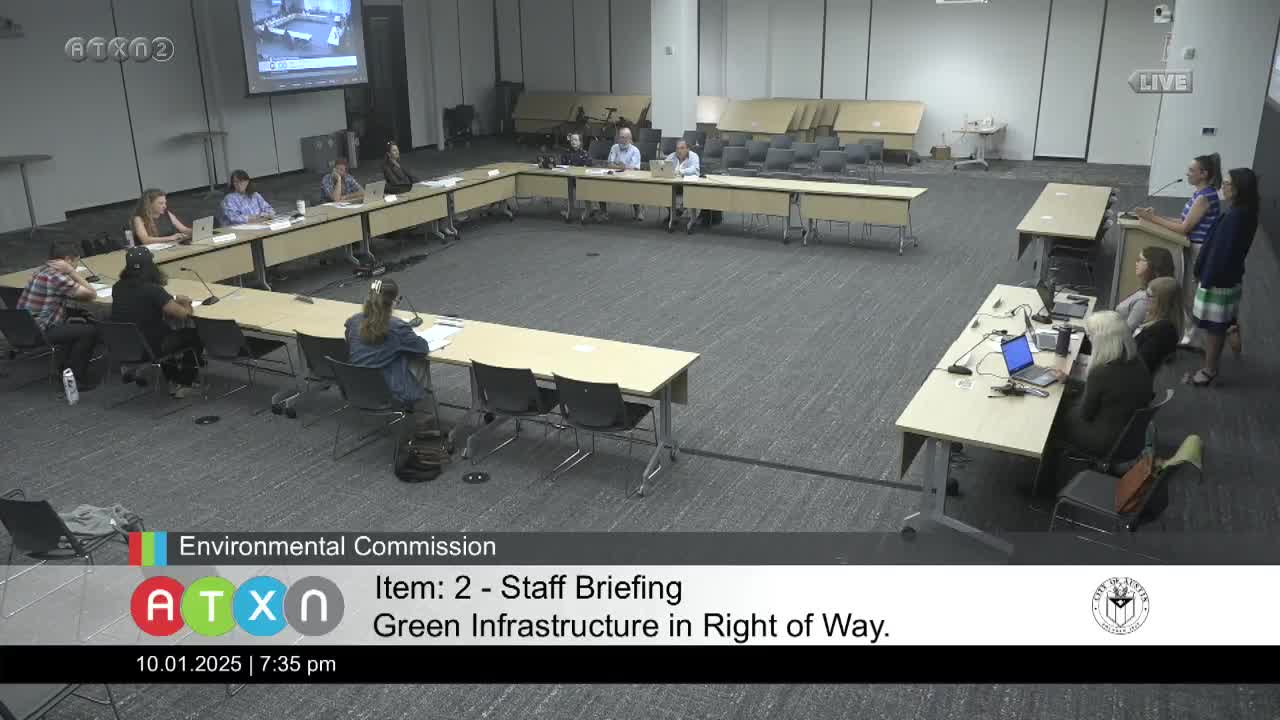Austin Urban Forestry Committee discusses tree mitigation funds and homeowner responsibilities
October 01, 2025 | Austin, Travis County, Texas
This article was created by AI summarizing key points discussed. AI makes mistakes, so for full details and context, please refer to the video of the full meeting. Please report any errors so we can fix them. Report an error »

In a recent meeting of the Environmental Commission in Austin, discussions centered around the city's tree mitigation fund, which has not seen an update since 2012. The fund, already stretched thin, is crucial for supporting urban forestry initiatives, yet its stagnant rate raises concerns among commission members. The conversation highlighted the need for innovative revenue streams from developers to bolster tree planting efforts, particularly in light of a proposed density bonus incentive that could tie tree planting to new developments.
Commission members explored existing development mitigation funds and other mechanisms that could provide financial support for tree planting. They acknowledged the volatility of current funding sources, which depend heavily on development activity and are already allocated to various grant programs, including those for neighborhood tree planting and public works projects.
The meeting also touched on the responsibilities of private homeowners regarding tree maintenance and the public right-of-way. Members clarified that while the city maintains public areas, property owners are responsible for the upkeep of trees on their private property. This distinction is vital for ensuring that urban greenery thrives alongside infrastructure.
TreeFolks, a local organization, plays a significant role in the city’s tree planting efforts, distributing around 8,000 trees annually, a number that continues to grow. Their recommendations for homeowners include planting trees at least 12 feet from the curb to accommodate future sidewalk installations.
As the commission continues to navigate these challenges, the discussions underscore a pressing need for updated policies and funding strategies to enhance Austin's urban forest and ensure a sustainable environment for future generations. The outcome of these conversations could shape the city’s approach to urban forestry and community engagement in the years to come.
Commission members explored existing development mitigation funds and other mechanisms that could provide financial support for tree planting. They acknowledged the volatility of current funding sources, which depend heavily on development activity and are already allocated to various grant programs, including those for neighborhood tree planting and public works projects.
The meeting also touched on the responsibilities of private homeowners regarding tree maintenance and the public right-of-way. Members clarified that while the city maintains public areas, property owners are responsible for the upkeep of trees on their private property. This distinction is vital for ensuring that urban greenery thrives alongside infrastructure.
TreeFolks, a local organization, plays a significant role in the city’s tree planting efforts, distributing around 8,000 trees annually, a number that continues to grow. Their recommendations for homeowners include planting trees at least 12 feet from the curb to accommodate future sidewalk installations.
As the commission continues to navigate these challenges, the discussions underscore a pressing need for updated policies and funding strategies to enhance Austin's urban forest and ensure a sustainable environment for future generations. The outcome of these conversations could shape the city’s approach to urban forestry and community engagement in the years to come.
View full meeting
This article is based on a recent meeting—watch the full video and explore the complete transcript for deeper insights into the discussion.
View full meeting
